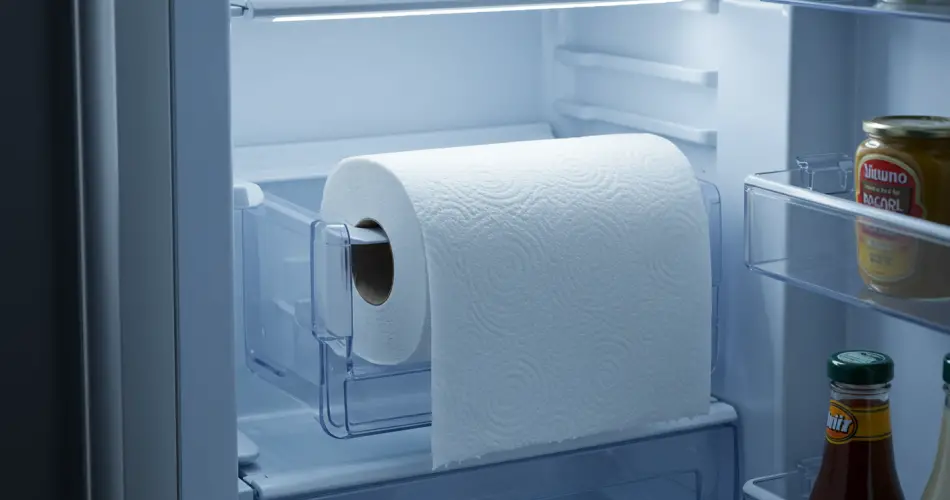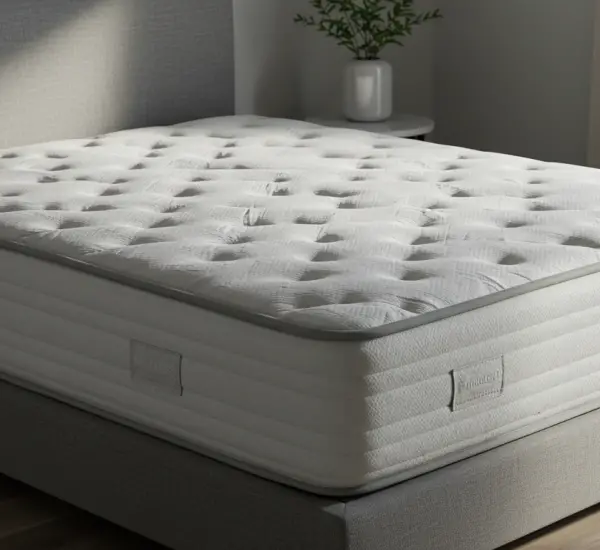For most households, the refrigerator is one of the biggest contributors to monthly electricity bills. It runs 24 hours a day, seven days a week, and while it’s indispensable for keeping food fresh, it can also quietly consume more energy than you realize—especially if it isn’t operating at maximum efficiency.
Luckily, there are simple tricks you can adopt at home to cut down on energy waste, and one of the most effective involves nothing more than your fridge and a sheet of paper towel. Known as the “paper towel trick,” this method is a quick way to check if your refrigerator is losing cold air unnecessarily and forcing itself to work harder. By identifying the issue early, you can save a significant amount of money on your electricity bills.
Why the Fridge Uses So Much Energy
Unlike other appliances that you only switch on when needed, the refrigerator works continuously. That constant operation means even small inefficiencies can add up to large costs over time. If your fridge door doesn’t close properly or the seal is damaged, cold air escapes, the internal temperature rises, and the compressor has to run longer to bring the temperature back down. The result? Wasted energy and higher bills.
In many homes, people don’t realize their fridge door seal—also called the gasket—isn’t doing its job. Even a small gap can make a big difference. That’s where the paper towel trick comes in.
The Paper Towel Trick Explained
This clever household test is used to check if your refrigerator’s rubber door seal is still working properly. Here’s how you can do it at home:
-
Take a sheet of paper towel (or a tissue, napkin, or even a strip of toilet paper). Dampen it slightly so it can stick better to surfaces.
-
Close the fridge door while positioning the paper towel between the door and the seal. You’re essentially “trapping” it in the gasket as you shut the door.
-
Try to pull the paper towel out. If you feel resistance and the paper remains firmly in place, it means the rubber seal is still functioning and keeping the door airtight.
-
Check multiple areas. Don’t test in just one spot—try the top, bottom, and sides of the door to make sure the seal is tight everywhere.
-
Interpret the results:
-
If the paper towel stays stuck, the gasket is in good condition.
-
If it slips out easily or doesn’t stick at all, the seal is failing, and cold air is likely escaping from your fridge.
-
If you discover that the seal is no longer working, it’s time to consider replacing it. Fortunately, fridge gaskets are relatively inexpensive, and swapping them out can lead to immediate energy savings.
Why This Simple Check Matters
The gasket may seem like a minor component, but it plays a crucial role in the fridge’s efficiency. When the seal doesn’t close tightly, your refrigerator is essentially fighting a losing battle. It keeps pumping out cold air while warm air continues to enter. Not only does this push your energy usage higher, but it also shortens the lifespan of the compressor, meaning you could be facing costly repairs or even the need for a new fridge much sooner.
By doing this quick paper towel test every few months, you ensure that your refrigerator is running smoothly and not secretly draining your wallet.
Other Ways to Save Energy with Your Fridge
The paper towel trick is just one method to reduce unnecessary energy waste. Here are additional strategies you can use to maximize your fridge’s efficiency:
-
Position your fridge wisely. Place it in a cool, well-ventilated spot, away from heat sources such as ovens, dishwashers, or direct sunlight. When a fridge is forced to fight external heat, it consumes more energy.
-
Avoid frequent door openings. Every time you open the door, warm air rushes in and cold air escapes. Plan ahead so you only open the fridge when necessary, and don’t leave the door open longer than needed.
-
Keep the gasket clean. Even if the seal is in good condition, dirt and food residues can prevent it from closing properly. Wipe it regularly with warm, soapy water and dry it thoroughly.
-
Don’t overfill the fridge. Air needs to circulate freely inside. An overstuffed fridge blocks airflow, making it harder to maintain an even temperature.
-
Set the right temperature. Many people set their fridge colder than necessary. For most households, 3–5 °C (37–41 °F) for the refrigerator and between -18 and -15 °C (0–5 °F) for the freezer is ideal.
-
Check your model’s efficiency. If your fridge is more than 10–15 years old, it may be time to upgrade. Modern models are far more energy-efficient and can quickly pay for themselves in reduced electricity costs.
When to Replace the Seal
If your paper towel test shows that the gasket isn’t working, replacing it is a relatively straightforward process. Most manufacturers sell replacement seals that you can install yourself without calling a technician. Simply remove the old gasket, clean the groove where it sits, and press the new one into place.
Think of it as a small investment that pays off in the long run. By restoring the airtight seal, your fridge won’t have to work as hard, and you’ll see a noticeable difference in your energy consumption.
The Bottom Line
Something as simple as a damp sheet of paper towel can reveal whether your refrigerator is costing you unnecessary money every single day. The paper towel trick is easy, takes less than five minutes, and can alert you to a problem before it gets worse.
Households that take the time to maintain their refrigerator—keeping the gasket clean, checking the seal, and setting the right temperature—often notice immediate savings on their electricity bills. And when you consider how much your fridge runs, those savings can quickly add up to a significant amount over the course of a year.
So before you accept those high energy bills as inevitable, grab a paper towel and give your fridge the test. You may discover that a simple fix is all it takes to cut your costs and keep your refrigerator running at peak efficiency.



